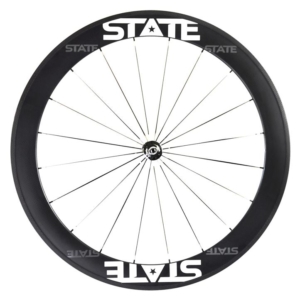We highlight the pros and cons of tubulars and clinchers
If you’re relatively new to triathlon then you’ve probably noticed many new terms, like tubulars and clinchers. Even veteran triathletes are learning new terminology about the sport. Whether you’re new to triathlon or you’ve been racing for years, we break down the difference between tubulars and clinchers.
[bctt tweet=”Learn about the pros and cons before you decide to make any purchases, replacements, or upgrades.” username=”kerrvilletri”]
Tubular tires, also known as “sew-ups” or “sprints” differ from clinchers in that they don’t have beads. Instead, the two edges of the tire are sewn together around the inner tube. Tubulars are used on special rims and are held on to the rims by glue.
Pro
– the lightest practical tubulars will always be lighter than the lightest clincher
– if you flat, you can ride on it for a little longer
– if glued properly, the tire will stay on the rim even if it flats
– ride quality
Con
– costs more (rims and tires)
– more difficult to maintain
– hard to repatch as an individual without team support on the road
– you could get tire/rim separation, especially when rims are hot from braking and end up like
Joseba Beloki in the 2003 Tour de France.
Conventional tires used on 99% of all bicycles are “clincher” type, also known as “wire-on.” They consist of an outer tire with a u-shaped cross-section and a

State Wheels Carbon Clinchers come in a variety of depths and are handmade in Austin, Texas
separate inner tube. The edges of the tire hook over the edges of the rim and air pressure holds everything in place.
Pro
– wheelsets are less expensive even if you get a really nice set
– replacement tubes are way less expensive
– you can replace the tube without replacing the tire
– wheels are more common
– easier to patch on the road, no need for gluing, stretching tire, etc.
Con
– if you flat, you can’t really ride on it
– some say a lower-quality ride
– will always be heavier than tubulars (tube, tire, clincher interface)
The ride quality and weight differences between tubulars and clinchers are getting smaller, but will always continue to be there. Especially with carbon wheels – carbon clinchers are more difficult to make and will be heavier than their carbon tubular rim counterparts.

